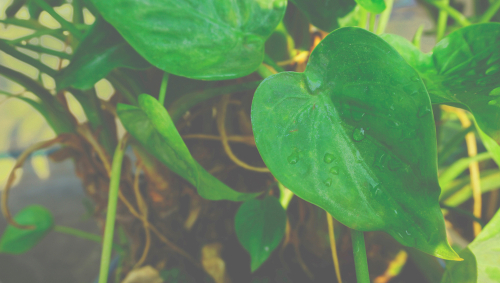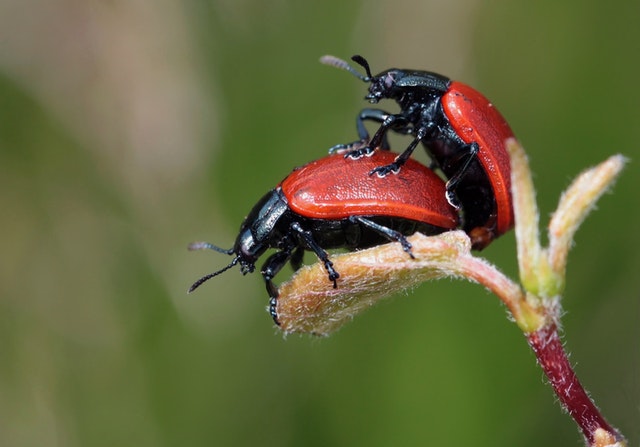The Anthurium Ace of Spades is arguably one of the most sought-after rare plants for collectors of tropical and unique plants. It is among the most exquisite Anthurium plants to have indoors.
Their deep green colors and large heart-shaped leaves are a joy to watch and can give your home or garden the aesthetic makeover that’ll please your heart and soul.
But taking care of them can be a bit difficult if you don’t know enough about the plant and its care guide.
In this detailed guide, we have gathered all the important details you need to know about the Anthurium Ace of Spades. Such as its origin, features, caring techniques, and common issues.
So, go through each section properly, and we guarantee you won’t need to look at any other guide again!
What Is Anthurium Ace of Spades

Anthurium crystallinum Ace of Spades, more commonly referred to as Anthurium Ace, is a hybrid from the Anthurium genus.
This plant is well known for its iconic velvet spade-shaped leaves which go through natural color changes throughout their lifetime. And due to its rarity, collectors and plant enthusiasts love to get hold of one of them.
As mentioned, the color of the leaf changes over time. During its child or juvenile stage, the leaves have purple-red foliage. This transforms over time and turns into a metallic bronze-like color in early adulthood and afterward into the admirable deep dark green color.
It can be grown into small structures like terrariums and pots, which makes this plant a great choice for a houseplant. But at the same time, they can also give depth and synergy to your garden as they can act as the backdrop for smaller plants in your garden.
These plants are also very low maintenance, so there is no need to be on constant alert when it comes to taking care of them. Just following a few well-known steps will ensure that your plant grows optimally and healthily.
Origin & Classification
While researchers still haven’t found the exact origin spot of the Anthurium Ace of Spades. The popular belief is that this plant originated from Southern and Central America. Many botanists also claim that it could have originated in Mexico or Hawaii.
Classification –
· Family – Araceae
· Subfamily – Pothoideae
· Genus – Anthurium
Features of Anthurium Ace of Spades
The plant comes with distinct features that set it apart from the rest of house and garden plants. These features are:
1. Stem & Foliage

One of the most recognizable features of the Anthurium Ace of Spades is that the plant comes with textured, velvety, thick dark green leaves. Their color is so dark that many often consider it completely black.
The leaves coordinate a heart shape; that is how it got the name Ace of Spades in the first place. Every leaf is around two to 3 feet long and two feet wide. The size can vary from time to time. But in most cases, it follows the mentioned parameter.
2. Evergreen Leaves
Another exciting feature of this plant is that the leaves remain green and fresh throughout their life without losing any small percent of their prime.
But as it is an Anthurium plant, it loses leaves over time. That being said, the leaves don’t fall off altogether. They fall one by one.
So, you won’t have to worry about the plant losing its appeal during its lifetime.
3. Medium Temperature Tolerance
Anthurium Ace of Spades prefers medium warm temperature. It doesn’t have high heat resistance, so keeping it in a heated area is a big no.
At the same time, this plant doesn’t have the cold or low-temperature resistance to be called frost hardy either.
This is why it is a great candidate as a household plant, as the best temperature you can give to this plant is the normal temperature you have in your house.
4. Moisture Dependent
A low humid environment is bad for this plant. This is because the plant depends on moisture to stay fresh and healthy. When it is exposed to low humidity, the leaves all dry up and make the appearance of the plant dull and unpleasing.
5. High Drought Resistance
It originated from the tropical zones of America, and due to its thick leaves, they can hold & store water for the future. That’s why they can withstand droughts without facing many issues.
So, if you forget to water the plants regularly, then you won’t have to worry that much. But do ensure that they get enough water to store. Otherwise, you will be seeing an unhealthy plant very soon.
6. Slow Growth
These species grow in a very slow manner and often cause concerns to their owners. But be assured that they will grow over time.
Generally, it will take two to three years to become a healthy Anthurium Ace of Spades. That being said, in extreme cases, the time can go up to four or five years. But this type of scenario is very rare for this plant.
7. Toxic Nature
This plant is poisonous to animals and humans. Try to keep the plant away from pets and children if you are putting them in your house.
Consuming this plant can lead to swelling and skin irritation.
8. Disease & Pest Resistance
The plant has a high disease and pest resistance due to its toxic nature. So, you can cross out most disease and pest-related issues. But you might have to be aware of spider mites.
9. Dormant in Winter

It is very dormant during cold seasons, and its growth rate witnesses a steady decline to a point where it seems negligible to most.
During its dormancy, you don’t have to do scheduled watering or fertilization. That being said, this plant is low maintenance even in warm seasons.
10. Low Maintenance
Even for beginners, anthurium ace of spades is easy to take care of. Even though the plant requires frequent watering, it can tolerate a lack of moisture for a short period of time. Also, the anthurium ace of spades flourishes in bright, indirect sunlight, but it can tolerate low light levels. This means the plant can adapt to different light conditions in any spot you place it in the home.
While the anthurium ace of spades thrives in temperatures between 65 and 85 degrees Fahrenheit, it can adapt to lower temperatures. In terms of humidity, the plant prefers high humidity levels, but it can survive moderate humidity levels.
In addition, the anthurium ace of spades doesn’t need much trimming like regular houseplants. Get rid of discolored and dead leaves on the plant, and it will remain as appealing as ever.
Basic Care of Anthurium Ace of Spades
As mentioned earlier, these plants require very low maintenance. But, if you don’t take care of them in the proper manner, you won’t be able to get a satisfying result from your plant.
Factors that you need to look out for caring are:
1. Water Requirements
Medium watering is best for the Anthurium Ace of Spades. As the plant loves moist conditions, you can get it by watering it every two to four days.
But this number can change depending on the soil condition. Because if the soil has fast drainage, then you might have to water the plant daily without any gaps.
Do keep an eye on water temperatures as the plant can’t take hot or cold water. Lukewarm water is the best choice.
2. Soil Requirements

Many messes up the soil conditions and end up harming their Anthurium Ace of Spades. The plant should be placed in neutral to slightly acidic soil. pH parameters should be from 6 to 7 and not more or less.
The soil should also be well-draining as these plants grow at a slower rate. Organic matter-filled soil is also a must.
You should also add orchid mix and natural fertilizers to increase fertility. The DIY potting mix works the best for this plant, and we recommend you go with this option if you have the time and resources.
As this plant doesn’t require much feeding, there is no need to fertilize it often, and it can get by fertilizing the soil every three or four months.
3. Temperature
The basic temperature range for the plant is around 20 to 30 degrees. Keeping it in warmer but not excessively heated environments will give you the best result.
4. Sunlight
You need to ensure that the plant gets around 70 to 90% sunlight every day. Otherwise, the leaves won’t achieve that magnificent dark green color. This will significantly decrease the appeal of the Anthurium Ace of Spades.
So, ensure the plant gets enough sunlight during the day.
5. Humidity
High humidity is the best for this plant. You should place it in an environment that is above 80% or more.
This is quite easy if you are growing the plant outside, but if you are growing it inside, then you need to ensure you keep the humidity levels up. It is because houses normally have only 10% of humidity.
Therefore, misting and artificial humidifiers will have to come into play if you are going indoor Anthurium Ace of Spades.
6. Pruning
There is also no need for pruning often with Anthurium Ace of Spades. You will only need to prune the leaves when they start to get dry and old. There is no need to groom the size as you should let the leaves grow naturally without any interference.
How to Propagate Anthurium Ace of Spades
There are two methods that you can opt for when it comes to propagating the plant. These are:
1. Stem Soil Method
2. Stem Water Method
1. Stem Soil Method
This method is fairly simple and easy. Start off by selecting a stem that should be around three inches or longer. Cut it off with a disinfected knife and get rid of any leaves in the bottom area. Remember to keep 2-3 leaves at the peak of the stem.
Next, prepare a pot with potting mix and position the stem at the center. Then you just have to water the pot regularly and keep it in sunlight, and you will see results in a few days.
2. Stem Water Method
Pick a stem with one or two nodes with a leaf and then cut the stem under the node with a sharp knife.
Next, pick a jar, make sure that it is filled with clean water, and put the stem inside it. You must ensure that the leaves don’t touch the water at any point.
After that, you just need to wait. The water will need to be changed after a while. Changing it twice a week will be enough. And after some weeks, roots will start spurting.
How to Repot Anthurium Ace of Spades
Unlike most houseplants, the Anthurium ace of spades plant doesn’t require regular repotting. But if you notice the plant is growing out of the pot’s drainage holes, it’s time to repot it.
Follow these simple tips to repot the plant at home:
- Get a bigger pot than the one you used previously, with drainage holes.
- Fill the pot with the same soil mix you used for the plant so that its adaptation will be fast.
- Remove the plant carefully from its pot; don’t pull it forcefully.
- Inspect the roots for signs of pests and diseases, and trim every damaged part.
- Place the Anthurium ace of spades plant in the new pot and add potting soil to its sides.
- Add some water to the plant and place the pot in a location with bright, indirect sunlight.
Common Problems in Caring for Anthurium Ace of Spades
It has a high pest and disease resistance. But that being said, it can face a few issues here and there.
The most common issues that you might face with Anthurium Ace of Spades are:
Bacterial Disease Infestation
Heavy moisture & temperature can risk the plant being infected by bacterial blights, root rots, and similar diseases. Just checking the signs and taking action quickly will solve these issues without any problem.
Insect Infestation

While most pests and insects will avoid the Anthurium Ace of Spades due to its toxic nature, you can expect infestation attacks from aphids, scales, spider mites, mealybugs, and thrips.
Common pest-resistant like neem oil, pyrethrin, malathion sprays, or just splashing the plant with water can solve the bug problem quickly and effectively.
Also read: Sansevieria Sayuri
Buying Options
The Anthurium Ace of Spade’s plant can be purchased on Amazon and Etsy. The price for the plant varies, so to get the lowest price, check both marketplaces. Click on the links below to check the prices-
Check Price on Amazon
Check Price on Etsy
Final Thoughts
Understanding their features and knowing how to take care of them makes the difference between having a healthy and beautiful Anthurium Ace of Spades and having an unhealthy and dry plant.
Hopefully, this article has shed light on this matter, and you now understand how Anthurium Ace of Spades works. So, why not pick one for yourself right now!
Frequently Asked Questions
Is Anthurium Ace of Spades toxic?
Yes, the plant is toxic to pets, animals, and humans alike. Consuming its leaves can lead to nausea, vomiting, and other gastro disturbance regarding ingestion.
So, keep your children and pets away from the plant for safety reasons.
Does the Anthurium Ace of Spades have a slow growth?
Yes, you might experience a slow growth on your Anthurium Ace of Spades. But it isn’t something to be alarmed about. But you can check your soil prep and watering conditions to be extra sure.
Generally, it will take two to three years for the plant to grow completely.
Why is my Anthurium Ace of Spades getting dull leaves?
Dull leaves are a sign of low humidity. If you are growing your Anthurium Ace of Spades in a house with a 70% or low humid environment, then this will be common accordance.
To counter this, you will have to manually increase the humidity surrounding the plant.

Hey, I’m Lisa and I’ve been an avid gardener for over 30 years. I love writing, talking and living in the garden! Feel free to connect with me on my socials below
